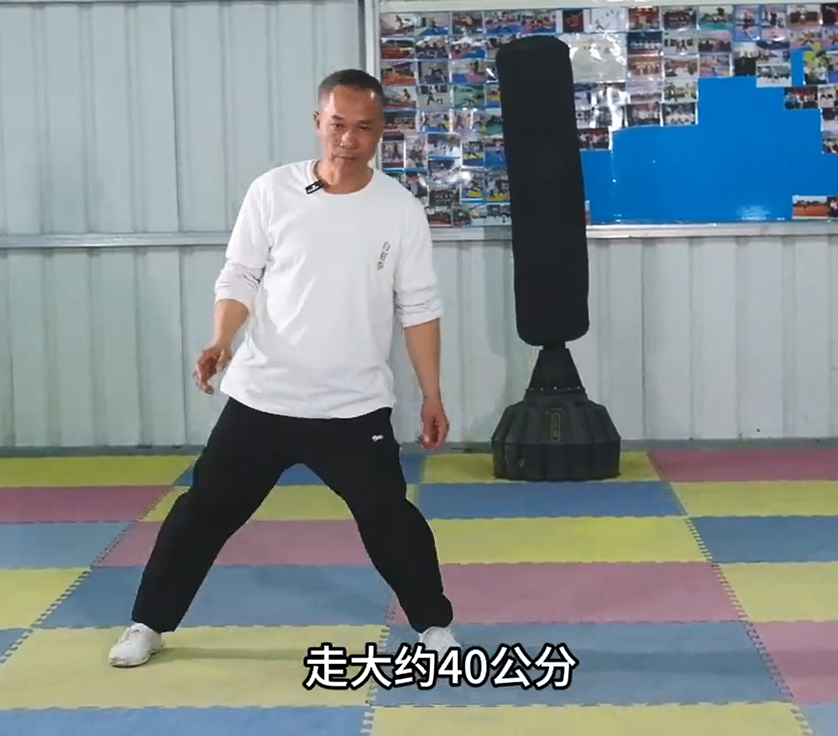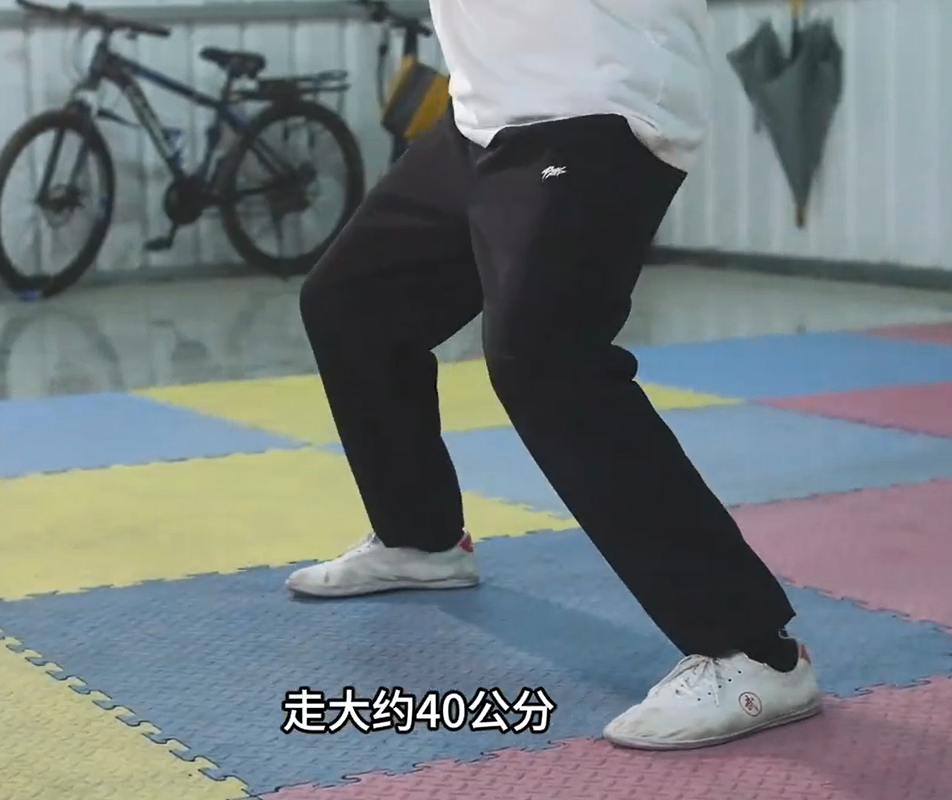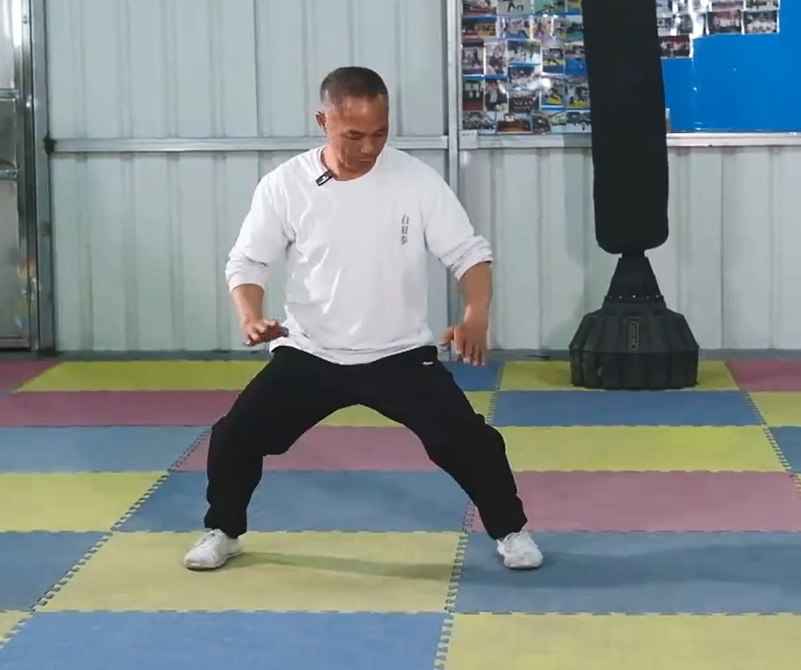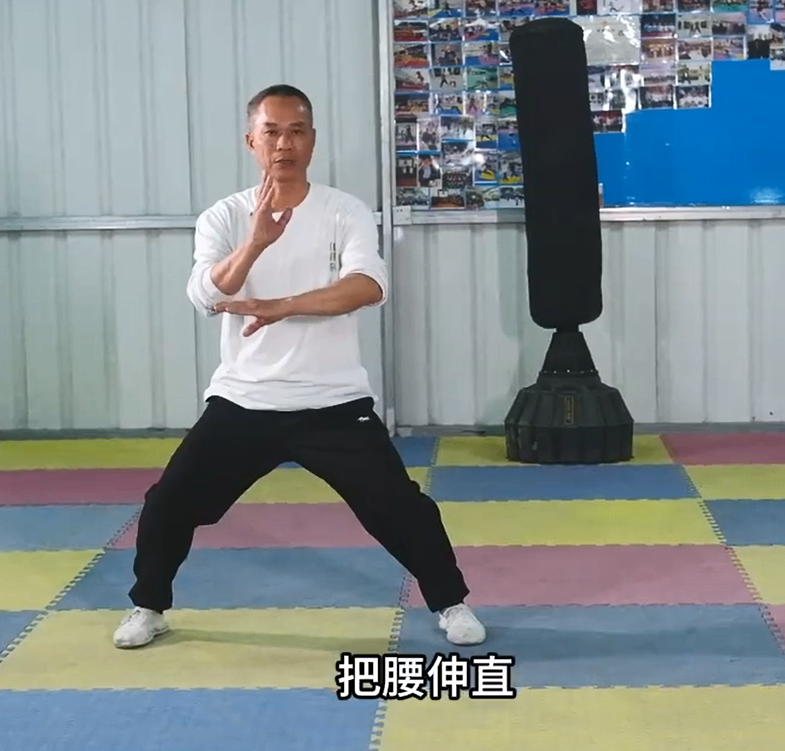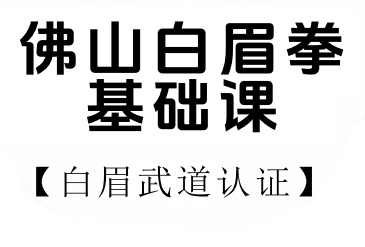"Today, we are going to learn the Si Ping Ma (Four-Point Horse Stance) . The Four-Point Horse Stance is one of the fundamental stances in Bak Mei Quan . This stance helps open the hips , making our leg transitions and waist rotation much more flexible. It not only provides a stable base for defense , but it's also the essential foundation for generating powerful attacks .
How to perform the Four-Point Horse Stance?
Start: Stand upright and straight.
Step: Move your right foot sideways, approximately 40 centimeters (about 16 inches) to the right.
Sink: Sink down into the stance.
Settle: Settle your weight low, lowering your center of gravity.
Feet: Curl your toes inward firmly and press them down into the ground.
Hips/Knees: Squeeze your inner thighs together and rotate your knees inward .
Waist: Keep your spine straight and upright .
Hands: Bring your hands in front of you, palms together slightly as if forming a praying hands gesture (or 'Buddha Palm' feel).
Key Points for the Four-Point Horse Stance:
Posture: First, ensure your waist/spine is straight .
Hand Position: Your hands should be about 30 centimeters (about 12 inches) in front of your body. [Gesture indicating distance from torso]. Palms should be facing inward with fingers spread .
Arm Position: Hands should be positioned directly above your feet .
Legs: Tense your thighs , engage the muscles, and press them inward towards the midline.
Feet: Grip the ground firmly with all ten toes curled inward . This inward curling creates a pulling sensation that extends your grounding and generates the feeling of inward compression throughout the stance.
Translation Notes
Terminology:
马步 (Mǎbù): Horse Stance (Standard term)
四平马 (Sì Píng Mǎ): Four-Point Horse Stance (Specific stance name - "Four Level" or "Four Point" is common)
开胯 (Kāi Kuà): Open the hips (Common martial arts concept)
粗腿 (Cū Tuǐ): Leg transitions / Shifting legs (Implies robust movement and stability)
转腰 (Zhuǎn Yāo): Waist rotation
防守 (Fángshǒu): Defense
支撑 (Zhīchēng): Stable base / Support
势大力沉 (Shì Dà Lì Chén): Powerful / Generating powerful (attacks)
佛掌 (Fó Zhǎng): Praying hands gesture (or Buddha Palm feel - this describes the hand shape and intent)
绞紧 (Jiǎo Jǐn): Squeeze / Rotate inward / Engage firmly (Refers to the inward rotation and tension of the thighs/knees)
内扣 (Nèi Kòu): Inward / Inward rotation (For knees/toes)
绷 (Bēng): Tense / Engage / Tighten
拉紧 (Lā Jǐn): Pull tight / Engage firmly
逼 (Bī): Press inward / Compress inward
扣住 (Kòu Zhù): Curl / Grip firmly
延伸 (Yánshēn): Extend / Root / Ground (The feeling generated by gripping)
内收 (Nèi Shōu): Inward compression / Drawing inward
Structure & Clarity:
Split the instructions into clear steps (1. Start... 2. Step... etc.).
Grouped the descriptive details (feet, hips/knees, waist, hands) logically under step 3 ("Sink").
Separated the "Key Points" section to emphasize crucial alignment and engagement principles.
Added clarifications in brackets [ ] where gestures or implied meanings needed explicit description (e.g., distance, hand orientation).
Translated the specific measurements (厘米 - centimeters) and included approximate imperial equivalents in parentheses.
Interpreted "负心的这个手指" as describing the palm facing inward and fingers spread, which is common in such stances.
Natural English Flow:
Used imperative verbs common in instruction ("Stand", "Move", "Sink", "Settle", "Curl", "Press", "Keep", "Bring").
Used concise martial arts phrasing ("Open the hips", "Stable base", "Generate powerful attacks", "Grip the ground firmly", "Engage the muscles", "Extend your grounding").
Replaced the slightly repetitive "**个...第二个" structure with a numbered list for the steps and a bullet-point list for the key points.
